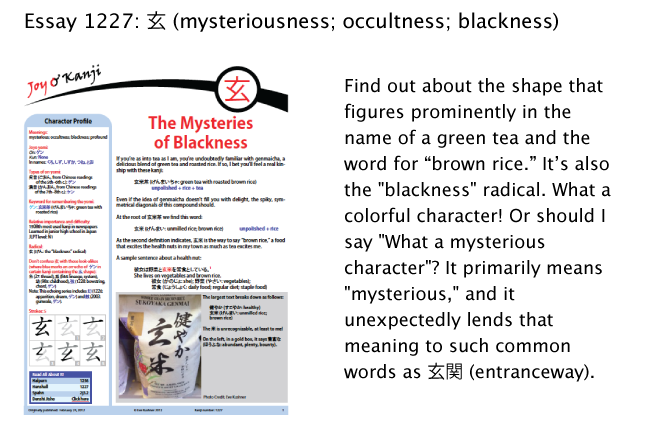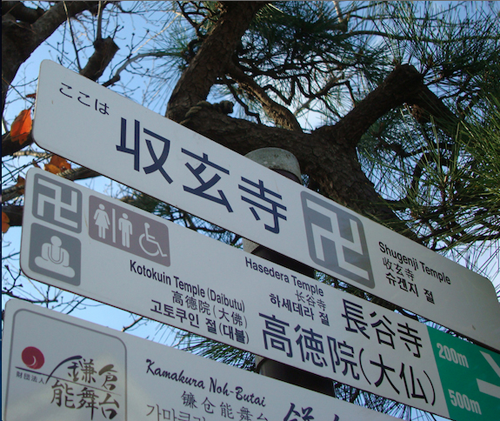Mystery in a Box
Nearly every time I start writing a kanji essay, I feel stuck, and I see no way out. I'm armed with a collection of compounds to cover, several of them fascinating in their own right. But when I take them as a whole, they sometimes seem flat and lifeless on the page. Over and over I ask myself, what story do they tell, and where can I find narrative tension (which every good story needs)? Each kanji presents itself as a tightly sealed box, and I need to figure out how to break into its riches. At the same time, I remain confident that I will eventually find a way inside. I also never lose faith that there's something magical and mysterious inside that box.
After all, the characters always have surprises tucked inside, like the very structure of 匠 (1388: craftsperson, artisan; skill; idea), which is neatly nested like a Russian doll. This, in fact, is the kanji that presented me with writer's block just yesterday. I knew I wanted to write about 匠, because it's the cutest little kanji. But it seemed to appear mainly in obsolete words about artisans and masters. These terms made my mind swim in abstractions, deadening the senses, rather than awakening them.
I realized that I needed to plant strong visuals in my mind and that this shouldn't be hard with 匠. After all, it has a strong connection to Japanese woodworking, which is one of the main ways in which Japan beckons to me. I adore the luscious woods used in Japanese creations, from sturdy tansus to the gleaming planks and wood-framed shoji screens of traditional houses. Seeing pictures of these would make my task easier, I figured, and I began Googling images of 匠.
I thought I would be seeing objects infused with the spirit of Old Japan. Instead I found something very different.
As I soon realized, marketers have coopted the 匠 kanji, most likely because it conveys a sense of mastery, a quality every business would like to claim that it has. One finds scads of enterprises and products called 匠 (たくみ).
Photo Credit: Eve Kushner
The name of this cafe-restaurant in Nikko (Tochigi Prefecture) showcases the non-Joyo kun-yomi of 匠, which is たくみ. By choosing this name, the establishment is claiming to have master chefs and master baristas.
When I say "scads," I mean that 匠 is the name of all of the following:
• Several restaurants, such one in Shinjuku, Tokyo, where you see the logo in the upper left corner of the web page. Here's another restaurant by the same name.
Look how one IT company cleverly used 匠 in its logo. If you have Flash, you can even see from another site how 匠 turned into that logo.
Who would have thought that a kanji that seemed antiquated to the point of smelling musty would have come into vogue in such a modern way? This is yet another kanji mystery, the sort of mystery that one finds inside each box of kanji! (There's a twist on Forrest Gump for you!)
Speaking of mysteries, I've just published essay 1227 on 玄, which means "mysteriousness; occultness; blackness; profound." Not surprisingly, this kanji offers quite a few mysteries of its own. For example, as the essay shows, 玄関 (げんかん) sometimes means "entrance hall" and sometimes means "front door," depending on the context. Here's a preview of that essay:

Examining 玄 led me in several unexpected directions. For example, looking at 裏玄関 (うらげんかん: back door) meant that I also considered 裏口 (うらぐち: back door), a word often related to shady activity, such as bribery. Furthermore, I included the following sign because it includes 玄 in the first line: 収玄寺 (しゅうげんじ: Shugenji Temple):

Photo Credit: Kevin Hamilton
I also felt compelled to investigate the symbol at the start of the second sign: 卍. As I found, although this symbol appears to be a swastika, it has no nefarious meanings here. This symbol originated in ancient India and has since spread around the world, with various cultures appropriating it in different ways. In Japan, it’s a Buddhist symbol known as a まんじ. People write this word as 卍 or 卍字. The 卍 kanji is non-Joyo and has the following yomi: バン, マン, and まんじ. That is, you can read this kanji as manji!
Following the 卍 trail, I soon came to this ultra-useful word:
卍刀 (まんとう: ninja weapon disguised as a pair of garden shears)
Let me know if you manage to work this term into a conversation! A box of mysteries indeed!
On the subject of boxes, I recently posted Radical Note 22 on the "box on side" radical, 匚. I wrote this to lay the groundwork for the 匠 essay, as 匚 is the on-duty radical in 匠.
Although 匚 looks quite simple, it too has mysteries waiting to be discovered. As I've shown in that free essay, every kanji with the 匚 radical plays a part in a pattern. That is, 匠 has a counterpart in the kanji 斤 (1176: loaf (of bread)). Similarly, 医 (medicine) has its counterpart in 矢 (arrow). The essay demonstrates that the contents of all these "boxes" also enjoy life as autonomous characters. I've never before seen a pattern like this!
Photo Credit: Eve Kushner
Real-life examples of the "box on side" radical.
What's inside these boxes? Scads of books, all about Japanese and mostly about kanji!
Have a great weekend! I hope many kanji reveal their mysteries to you in the near future!

Add comment